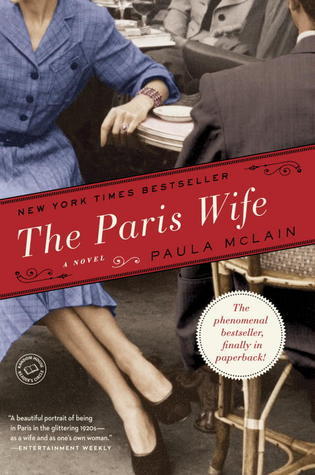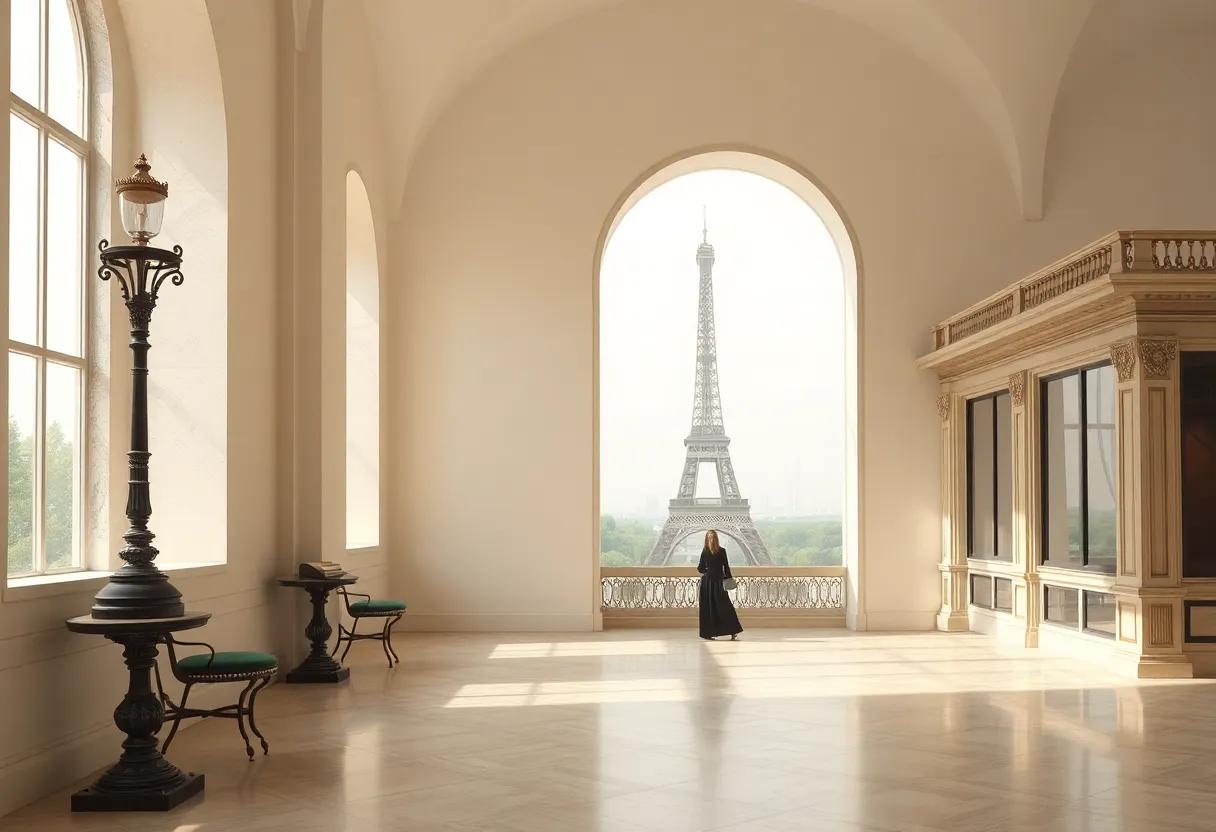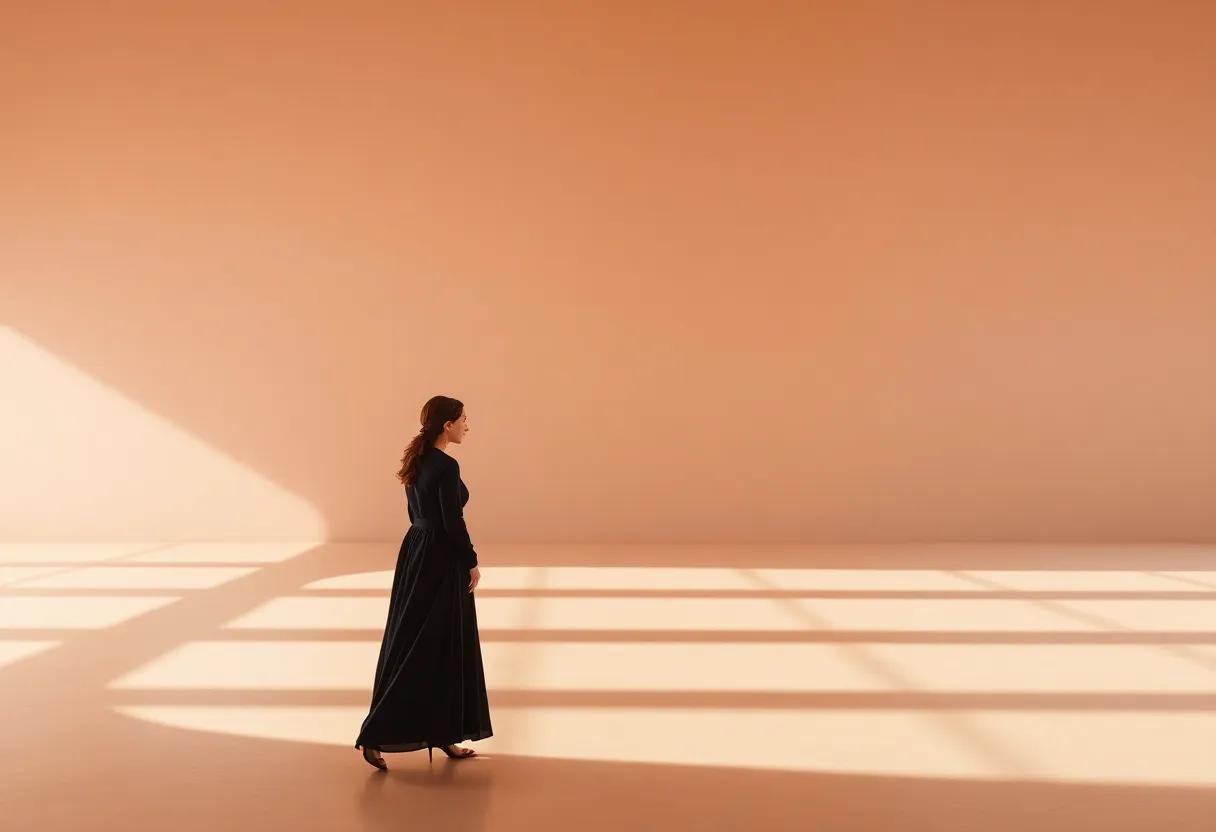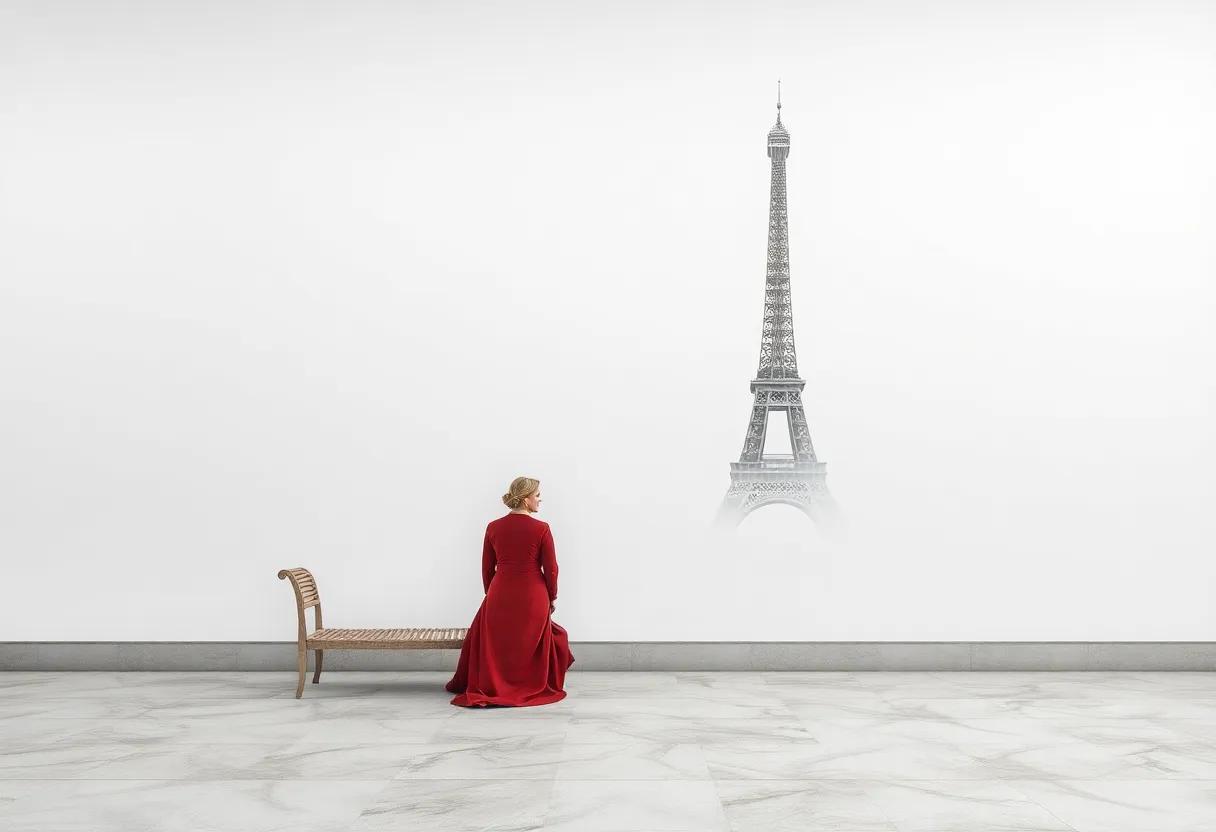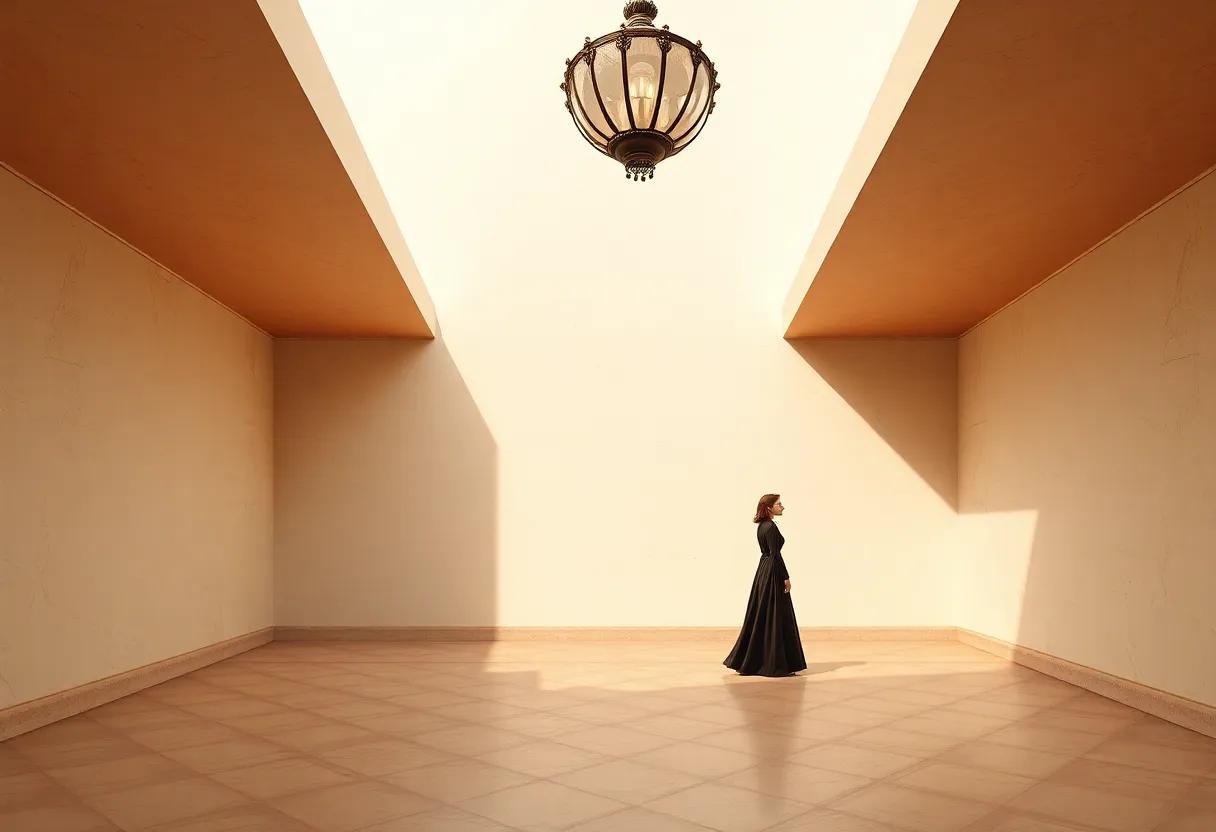in the tender embrace of literary exploration, Paula McLain’s “The Paris Wife” invites readers into the exquisite yet tumultuous world of love and loss. Set against the backdrop of 1920s Paris, the novel unfolds the poignant story of Hadley Richardson, the first wife of Ernest Hemingway, illuminating the delicate interplay between devotion and ambition. Through evocative prose and intimate characterizations, McLain paints a vibrant portrait of a woman navigating the complexities of love, artistic aspiration, and the inevitable heartache that shadows both. In this review, we delve into the rich themes woven throughout the narrative, examining how McLain captures the essence of a generation while offering a moving reflection on the enduring impact of relationships that shape our identities. Join us as we journey through the streets of Paris and the depths of the human heart,uncovering the layers of passion and despair that define “The Paris Wife.”
The Essence of Love in a Turbulent Era
The backdrop of a world in turmoil frequently enough amplifies the intimate nature of love, as seen through the eyes of Hadley Richardson in ‘The Paris Wife’. In the bustling streets of Paris during the 1920s, a time marked by artistic revolution and profound societal shifts, Hadley’s love for Ernest Hemingway becomes a haven amidst chaos. Their relationship is not merely a romantic escape but a complex interplay of aspiration, longing, and the inevitable shadows of jealousy. The essence of their bond lies in moments of profound connection—shared laughter over breakfast in cozy cafés, whispered dreams amid the nightlife’s pulse—but also in an underlying tension that mirrors the ancient turbulence surrounding them. Hadley’s journey captures love’s dual nature, both as a refuge and as a source of pain, illustrating that even in passion’s glow, darkness lurks close behind.
The narrative invites us to ponder how love can evolve when subjected to external pressures and internal doubts.It brings forth questions of loyalty, ambition, and personal identity.Each character’s pursuit of an artistic life intertwines their destinies, leading to sacrifices that redefine their understanding of love. As Hadley grapples with her role as a muse versus an individual,we see the fragile balance that love requires. Key moments in their relationship reveal the following truths:
- Vulnerability is Strength: Love thrives when partners expose their insecurities.
- Success vs. Belonging: The tension between personal ambitions and shared dreams can fray bonds.
- The cost of Passion: Sometimes the flames of love consume more than they illuminate.
Unveiling the world of 1920s Paris
Stepping into the vibrant streets of 1920s Paris is akin to walking through a kaleidoscope of creativity and passion.This era, often celebrated as the “roaring Twenties,” is characterized by its effervescent energy and artistic revolution. Amidst the ornate cafes, spirited jazz clubs, and revolutionary artists, love stories blossomed and heartbreaks echoed in the alleyways.The city was a muse for writers, painters, and thinkers who thrived on the thrill of modernity and the promise of endless possibilities. The atmosphere was saturated with the intoxicating blend of love and loss, as friendships cultivated in the smoky corners of these establishments evolved into turbulent romances that would shape literary history.
At the heart of this energetic tapestry lies a diverse cast of characters who navigated their lives through the lens of ambition and emotion. Influential figures such as Ernest Hemingway,Gertrude Stein, and F. Scott Fitzgerald left indelible marks on the literary scene, shaping a cultural landscape that embraced both the exhilarating highs and heartfelt lows. In addition to their artistic pursuits, personal relationships frequently enough flared like fireworks, illuminating the personal struggles that served as a backdrop for their creative expressions.Within this extraordinary milieu, the exploration of love and loss takes center stage, revealing the duality of joy and melancholy that defined the human experience during this transformative decade.
Character Development: A Journey Through Emotion
In The Paris Wife, Paula McLain takes us on an emotional journey through the complexities of love and loss, navigating the intricate tapestry of relationships against the backdrop of a vibrant yet tumultuous Paris. The protagonist, Hadley Richardson, serves as both a lens and a vessel for exploring the passionate yet precarious romance with the famed author Ernest Hemingway. Through her eyes, we witness the exhilarating heights of newfound love. Readers are invited to experience the thrill of companionship intertwined with the shadows of insecurity, emphasizing how love can be as intoxicating as it is indeed challenging.McLain intricately weaves together a rich emotional landscape, allowing us to feel Hadley’s joy, passion, and eventually, her profound heartache.
Moreover,the narrative poignantly captures the bittersweet ache of loss,showcasing how it shapes one’s identity. McLain does this by portraying Hadley’s gradual conversion—her evolution from an adored muse to a woman grappling with disillusionment in the wake of betrayal. As we delve deeper into Hadley’s psyche,we encounter the global themes of sacrifice,longing,and the painful reality of unreciprocated affection.The author brilliantly illustrates how love, though seemingly fleeting, leaves indelible marks on the human soul, crafting a poignant tableau of emotion that resonates long after the final page is turned.
The Art of Storytelling in McLain’s Prose
Paula McLain weaves a delicate tapestry of emotion in her prose, skillfully blending the past with the present to create a rich narrative landscape. In ‘The paris Wife’, she transforms the ordinary moments of love and heartbreak into profound chapters of life, juxtaposing the glamour of 1920s Paris with the intimate struggles of her characters. Through vivid descriptions and carefully crafted dialog, McLain allows readers to experience the highs of romance and the lows of loss. The resonance of her storytelling lies in its authenticity, inviting the audience into the world of Hadley Richardson and Ernest Hemingway, capturing their dreams, aspirations, and inevitable heartaches. Each sentence serves not just to advance the plot but to deepen our understanding of love’s complexities.
McLain’s emphasis on sensory details enhances the reading experience, as she paints emotional landscapes through the flavors, sights, and sounds of Paris. The labyrinth of their relationship is mirrored in the distinctive rhythms of her narrative, where moments of joy are often entwined with threads of melancholy. Consider the following aspects of her storytelling that contribute to its artistry:
- Character Depth: Complex characters whose emotions and motivations are meticulously explored.
- Historical Context: A deft infusion of historical detail that enriches the narrative and grounds the characters.
- Emotional Resonance: each scene is layered with feelings that speak to universal experiences of love and loss.
| Aspect | Description |
|---|---|
| Imagery | Vivid sensory descriptions that transport readers to the heart of Paris. |
| Dialogue | Authentic conversations that reveal character dynamics and emotional truth. |
| Narrative Structure | Non-linear timelines that reflect memory and introspection. |
Themes of Loss and Resilience in Relationships
In Paula McLain’s The Paris Wife, the intricate tapestry of love is often overshadowed by profound loss. The narrative encapsulates the bittersweet reality of relationships, illustrating how dreams can fray against the harsh backdrop of time and circumstance. Through the experiences of Hadley Richardson, readers witness the delicate balance of joy and sorrow as she navigates her marriage to Ernest Hemingway. The story poignantly reveals that even amidst the glamour of Paris and the vibrancy of literary circles, loss lurks close by, serving as a reminder of the fragility of human connection. Key moments that reflect this theme include:
- Missed Opportunities: Hadley’s sacrifices for ernest’s career often leave her feeling isolated.
- Emotional Distance: As Ernest gains fame, the chasm between their dreams widens, symbolizing a profound loss.
- Grief and Change: The emotional toll of infidelity and personal ambition reshapes their relationship, underscoring resilience through heartache.
This resilience is portrayed not as a mere survival tactic but as an active engagement with one’s pain and the complexities of love. Hadley embodies a poignant mixture of strength and vulnerability; as she confronts betrayal and eventual separation, her journey becomes a testament to the endurance of the human spirit. McLain crafts a narrative that invites readers to reflect on how relationships can transform us, producing growth amid suffering. The following table highlights key transformations Hadley undergoes:
| Transformation | Description |
|---|---|
| Initial Idealism | Hadley’s hope and dreams as she enters the relationship. |
| Confronting Reality | experiencing the harsh truths and challenges of her marriage. |
| Finding Strength | Embracing her independence in the face of loss. |
The Intersection of Fiction and Biography
In The Paris Wife, Paula McLain masterfully blurs the lines between fiction and biography, offering readers a glimpse into the turbulent life of Hadley Richardson, the first wife of the renowned author Ernest Hemingway. By intertwining rich narrative with factual details, McLain invites us into the intimate world of this literary couple, illustrating how their passionate romance and personal challenges influenced Hemingway’s work. Through Hadley’s eyes, we explore the vibrant backdrop of 1920s Paris, populated by literary giants and artistic revolutionaries, showcasing how their lives intersect with historical moments, resulting in powerful emotional resonance.
This complex layering of truth and creativity allows McLain to delve into themes of love and loss in profound ways. Consider the following elements that bridge fiction with real-life events in the narrative:
| Elements | Fictional Representation | Historical Truth |
|---|---|---|
| Hadley and Hemingway’s romance | Intense passion and idealism | documented love letters |
| Artistic community in Paris | Exaggerated camaraderie | Fact-based relationships with artists |
| Struggles with fidelity | Emotional turmoil | Real marital discord |
This inquiry into both the heartache and exhilaration of Hadley’s experience reflects a careful balance of fact and fiction,allowing readers to feel the weight of her sacrifices while savoring the beauty of their shared moments. McLain’s work is a poignant reminder of how personal histories can be reimagined through the lens of storytelling, making the past vibrant and relatable, ultimately enriching our understanding of the literary canon.
Historical context: Navigating Hemingway’s Life
In the vibrant backdrop of the 1920s, a time marked by distinctive shifts in art, culture, and social norms, Hemingway’s life was woven into the fabric of an era defined by its transatlantic expatriate community. He found himself at the epicenter of the Lost Generation, a group of American writers who picked up the pieces after the devastation of World War I. This period not only informed Hemingway’s perspectives on love and loss but also shaped his relationships. His marriage to Hadley Richardson, the focus of Paula McLain’s The paris Wife, was familiar to those navigating the tumultuous waters of youth and ambition, bound by the passion of their vibrant surroundings in Paris. The intoxicating allure of the city served as both inspiration and backdrop, making it the perfect stage for their romance and subsequent heartache.
As readers delve into The Paris Wife, it’s crucial to understand the complexities of Hemingway’s character and ambition, frequently enough encapsulated in key themes that shaped his life experiences:
- Ambition and Artistic Drive: Hemingway’s relentless pursuit of literary recognition often came at the cost of personal relationships.
- Infidelity and Betrayal: The cracks in his marriage emerged in part due to his increasingly reckless lifestyle.
- Loss and Grief: Personal tragedies, intertwined with the backdrop of war, echoed deeply in his emotional landscape.
This combination of deep emotional currents creates a rich, complex narrative through which McLain explores the tumultuous yet profound love story between Hemingway and Hadley, illustrating how the currents of their times influenced their lives forever.
Imagery and Symbolism: The Power of Place
In “The Paris Wife,” the city of Paris emerges as a character in its own right, embodying the intoxicating mix of love, ambition, and disillusionment that defines Hadley Richardson’s journey. The vibrant streets, the alluring cafés, and the iconic landmarks serve not only as backdrops for the romance between Hadley and Ernest Hemingway but also as symbolic reflections of their hopes and dreams. As they navigate the buzzing literary scene, Paris represents a space of endless possibilities, teeming with the promise of artistic success and personal transformation. However, the city’s charm gradually reveals its dual nature, mirroring the complexities of their relationship as dreams give way to harsh realities. The progression from sunlit mornings in Montmartre to the shadows of betrayal serves as a poignant metaphor for the bittersweet nature of love.
The use of imagery throughout the narrative deepens the emotional resonance of Hadley’s experience, illustrating how place influences the psyche. Key locations become imbued with meaning,highlighting the contrast between the euphoria of newfound love and the impending heartache. As an example, the couple’s initial encounters are marked by a sense of belonging and connection in places like the Café de Flore and the Shakespeare and company bookstore, which symbolize their idealistic vision of life together.Yet, as the story unfolds, settings like the desolate shores of Lake Michigan reflect the isolation and distance that begins to envelop their marriage. In this way, McLain masterfully uses Paris as a canvas to paint the vivid, frequently enough turbulent emotions associated with love lost, allowing readers to feel the weight of both place and memory.
Emotional Depth: Captivating the Reader’s Heart
In Paula McLain’s poignant narrative, the emotional landscape is alight with both the dizzying heights of love and the harrowing depths of loss.The protagonist, Hadley, navigates her tumultuous relationship with Ernest Hemingway, encountering the passion and betrayal that define literary love stories. McLain skillfully paints scenes where the sparking joy of their early romance contrasts starkly with the shadows of fear and separation that loom as their lives become increasingly complex. Through vivid imagery and intimate details, readers are drawn into Hadley’s world, making them feel the sweetness of stolen moments alongside the bitterness of inevitable heartache.
Moreover, the author employs a range of evocative devices that immerse audiences in the emotional rollercoaster experienced by the couple. From Parisian cafés filled with laughter to the desolate silence of a crumbling marriage, each setting enhances the raw sentiment driving the narrative forward. Key themes include:
- The complexity of love: Where passion can swiftly turn into pain.
- Personal ambition vs. relational sacrifice: Exploring how art and love can coexist or clash.
- The passage of time: How memories shape identity and influence present choices.
through Hadley’s reflections, McLain invites us to contemplate the fragility of love—the way it can elevate us to divine heights or plunge us into despair. In this intermingling of joy and sorrow, readers not only witness the evolution of a cherished relationship but also confront their own understanding of love’s enduring complexities.
Drifting Through Time: The Journey of Memory
In The Paris Wife, memory serves as both a refuge and a haunting specter for Hadley Richardson. As she navigates her complex relationship with Ernest Hemingway, the passage of time becomes a key player in their love story. The vibrant backdrop of 1920s Paris juxtaposes the bittersweet nature of their romance, creating a tapestry woven with dreams and heartaches. Throughout the novel, Hadley’s reflections reveal how moments of joy are often tinged with the anticipation of loss, showcasing the delicate balance between love and grief that defines her journey. This exploration unearths the notion that our memories can be both cherished treasures and painful reminders of what once was.
As Hadley drifts through the vibrant streets of the city of Light, her memories are layered with dreams of artistic grandiosity alongside the stark reality of her fading marriage. The novel invites readers to contemplate the nature of remembrance, as it dances between nostalgia and acceptance. It poses important questions about the legacies we leave behind and the stories we tell ourselves, serving as a poignant reminder of how we often cling to the past, even while moving forward. In this way, McLain intricately illustrates the enduring impact of time on love and identity, enriching our understanding of human connection.
| Theme | Description |
|---|---|
| Memory | Reflects on the past,enriching understanding of love. |
| Loss | Contours the bittersweet nature of relationships. |
| Nostalgia | A longing for the past, while accepting reality. |
The Role of Women in the Narrative
In “The Paris Wife,” women are not merely supporting characters, but rather the driving forces behind the emotional landscape of the narrative. the protagonist, Hadley Richardson, emerges as a complex figure whose experiences of love, ambition, and heartbreak poignantly reflect the broader struggles of women in the early 20th century.Through her eyes, we witness the societal expectations placed upon women, and how they grapple with the duality of being a partner to a famous man while trying to assert their own identities. Hadley’s inner turmoil is emblematic of many women’s journeys of self-revelation in a world that often sidelines their voices and desires.
The narrative also highlights the camaraderie between women, which serves as a crucial lifeline amidst the chaos of their relationships with men. Supportive friendships, such as those Hadley shares with other expatriates and artists, underscore the importance of female solidarity during trying times. These connections provide comfort and understanding, offering a contrast to the tumultuous love affair with Ernest Hemingway. The interplay between personal struggles and the strength found in these bonds reveals how women navigated the complexities of love, loss, and ambition in an evolving society.
Critical Reception and Impact on Literature
Upon its release, ‘The Paris Wife’ received widespread acclaim for its poignant exploration of love and ambition set against the backdrop of 1920s Paris. Critics praised Paula McLain for her lyrical prose and vivid characterization,particularly in portraying the complexities of ernest Hemingway’s relationship with Hadley Richardson. The novel’s rich historical context, alongside its emotional depth, resonated with readers, leading to its quick ascent on bestseller lists.Many reviews highlighted the way McLain reinterpreted Hemingway’s early years, offering a fresh outlook on a literary figure frequently enough viewed through the lens of his fame rather than his vulnerabilities.
Beyond immediate critical success, McLain’s work has significantly impacted contemporary historical fiction, inspiring a wave of authors to delve into the lives of iconic figures through the eyes of lesser-known partners. The narrative’s blend of fact and fiction captivates audiences, prompting discussions about the roles of muse and artist in a relationship. Notably, the novel has paved the way for other works that reflect on the nuances of companionship and loss, creating a small yet impactful literary genre. As a result, ‘The Paris Wife’ serves not only as a captivating story but also as a pivotal reference point in the evolution of romantic historical narratives.
Reflections on Personal Growth Through Adversity
Adversity often serves as a crucible for personal growth, and in The Paris Wife, we witness the transformative power of struggle through the lens of Hadley Richardson. Her journey reveals the intersection of love and hardship, which shapes her identity amid the tumultuous relationship with Ernest Hemingway. The weight of his ambition and the inevitable complexities of their marriage push Hadley to confront her own resilience and self-worth. Through her trials, we see how she learns to navigate the shadows of love — a dance of joy interspersed with the ache of unfulfilled dreams. This bittersweet narrative illustrates how challenges can illuminate our strengths, forcing us to redefine what we want from life and love.
Learning to embrace personal challenges is a theme that resonates widely, and Hadley’s story exemplifies the idea that growth can often spring from pain. Essentials of this transformation are presented below:
| Challenge | Growth |
| Loss of Identity | Rediscovery of Self |
| Emotional Turmoil | Resilience in Adversity |
| Unfulfilled Aspirations | Clarifying Life Goals |
Hadley’s evolution reminds us that love can be both a sanctuary and a battlefield. Engaging with our vulnerabilities can lead us down a path of self-discovery that impacts not just our relationships, but our very essence. The complexities of love in the face of loss teach us invaluable lessons about empathy and compassion, which ultimately enrich our understanding of ourselves and others.Through pain, Hadley finds her voice and asserts her place, showcasing that while loss may carve paths of sorrow, it can also pave the way to profound personal enlightenment.
Understanding the Mind Behind the Novel
In Paula McLain’s poignant exploration of love and loss, the intricate tapestry of human emotions is woven into the fabric of 20th-century Parisian life.The novel delves deep into the psyche of Hadley Richardson, capturing her tumultuous relationship with the iconic Ernest Hemingway. Through Hadley’s perspective, readers experience the intoxicating highs of passion intertwined with the piercing lows of heartbreak. McLain masterfully employs vivid imagery and rich detail to paint a backdrop that not only reflects the lavishness of an era but also mirrors the emotional struggles faced by its characters. The narrative invites us to ponder how love can together empower and dismantle, offering a poignant commentary on the fragility of intimate connections.
One of the most striking elements of McLain’s storytelling is her ability to make the historical personal, immersing readers in the inner workings of Hadley’s mind as she navigates love’s complexities. The novel illustrates a range of conflicting emotions that frequently accompany romantic relationships, highlighted by:
- Passionate Attachment: The allure of a burgeoning romance that captivates the heart.
- Self-Doubt: The inner turmoil faced by Hadley as she grapples with her identity amid Ernest’s rising fame.
- Longing: An exploration of the void created by separation and the inevitable distance that emerges over time.
In portraying these emotional stakes, McLain invites her audience to reflect on their own experiences, evoking a universal understanding of love’s impermanence. The narrative’s structure and pacing enhance the tension between past and present, compelling readers to engage with the characters’ inner conflicts as they seek solace amidst the chaos of creative genius and profound love.
Key Takeaways
In “The Paris Wife,” Paula McLain artfully navigates the tumultuous waters of love and loss, painting a portrait that is both intimate and expansive. As we close our exploration of this entrancing narrative, we are reminded of the enduring complexities of human relationships and the tangible impact of the past on our present. McLain invites us not only to witness the highs and lows of Hadley Richardson’s life with Ernest Hemingway but also to reflect on our own experiences of love and grief, which resonate universally.Ultimately, “The Paris Wife” serves as a poignant reminder that every relationship is a tapestry woven from shared dreams and individual sacrifices. It beckons readers to ponder the delicate balance between ambition and intimacy, leaving us with the lingering question: how do we reconcile our passions with the certainties of heartache? As we turn the final page, we carry with us not just Hadley’s story, but also the profound insights that echo long after the book is closed—reminding us that in the journey of love, loss is perhaps the most poignant companion of all.

